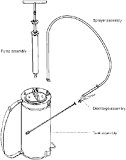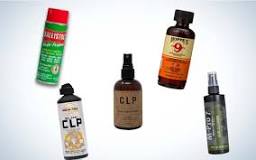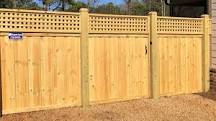When it comes to agriculture sprayers, the type of nozzle you use can make a huge difference in how effectively you apply pesticides, herbicides, or fertilizers. Different nozzles are designed for specific tasks, influencing droplet size, spray pattern, and coverage area. This post will explore the various types of nozzles commonly used in agricultural sprayers and their unique benefits.
Adjustable Conical Nozzle
This is often the go-to nozzle for many farmers. The adjustable conical nozzle is versatile and can be tweaked to fit different application needs. You can easily switch from a fine spray for small areas to a narrower cone for targeted treatments just by twisting the nozzle. This adaptability makes it perfect for various situations, whether you’re spraying between tiles or on pathways.
Fan Nozzle
If you’re looking for good coverage, the fan nozzle is your friend. It has a rectangular or elliptical opening that disperses liquid over a wider area. This means you can cover larger sections of crops more efficiently, making it ideal for post-emergence herbicide applications where uniform coverage is key.
Mirror Nozzle
The mirror nozzle is designed with a wide opening angle, which makes it great for applying herbicides before crops emerge. It produces thicker droplets, reducing the risk of drift—an essential feature when you’re working in windy conditions. Plus, it allows you to treat larger areas in less time, making your spraying tasks quicker and more efficient.
Disc Nozzle
For those precise applications—like insecticides or fungicides—the disc nozzle is the way to go. It creates a hollow cone-shaped spray that’s excellent for achieving full coverage on crops that need fine droplets for better penetration. This nozzle type is especially useful when you’re aiming for accuracy and thoroughness in your treatment.
Split Top Nozzle
This one’s pretty handy too! The split top nozzle provides an elliptical spray pattern and works well under low pressure. It’s versatile enough for almost any application, and you can find variations like the basic split top and the Venturi type, which creates smaller droplets for improved coverage.
Swirl Nozzles
Swirl nozzles produce a cone-shaped spray and are typically used with high-pressure systems. They generate fine droplets but are less suited for spray booms due to their design. If you need something that produces small drops in a circular pattern, this is your best bet!
Floodjet Nozzles
These nozzles are perfect for high-volume applications at low pressure. With a wide angle of up to 160°, floodjet nozzles can deliver both large and small droplets, making them suitable for herbicides that require substantial coverage.
FAQ
What factors should I consider when choosing a nozzle?
When selecting a nozzle, consider the type of crop you’re treating, the pesticide or herbicide being used, and the desired droplet size. Each crop may require different coverage levels and droplet sizes to maximize effectiveness while minimizing drift.
How do I know if my nozzle is suitable for my sprayer?
Check your sprayer’s specifications and match them with the nozzle’s recommended operating pressure and flow rate. It’s crucial that they align to ensure optimal performance.
Can I use different nozzles on the same sprayer?
Absolutely! Many sprayers allow you to switch out nozzles based on your needs. Just make sure to adjust your settings accordingly to maintain effective spraying.
Choosing the right nozzle can significantly impact your agricultural practices. Whether you’re looking for versatility with an adjustable conical nozzle or precision with a disc nozzle, understanding these options will help you achieve better results in your fieldwork.







